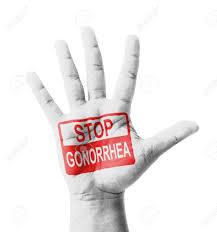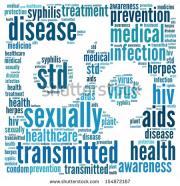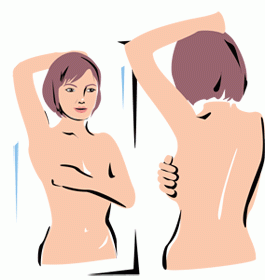 The link between smoking during pregnancy and the reduced health of offspring are well known, and past studies have suggested that exposure to smoke in the womb has different health consequences for boys and girls. A recent in depth study conducted by scientists from the University of Aberdeen, University of Glasgow, and the University of Edinburgh found that smoking while pregnant affects the livers of male and female fetuses differently.
The link between smoking during pregnancy and the reduced health of offspring are well known, and past studies have suggested that exposure to smoke in the womb has different health consequences for boys and girls. A recent in depth study conducted by scientists from the University of Aberdeen, University of Glasgow, and the University of Edinburgh found that smoking while pregnant affects the livers of male and female fetuses differently.
There are many important proteins housed in the livers of fetuses and smoking while pregnant changes the amounts of these proteins that are present. The changes in protein levels that the researchers found indicate that the affected livers will not be able to function to their full capacity of making, secreting, and processing proteins. Although the levels of proteins were only slightly altered, even these small levels can lead to significant changes in organ function. These changes in the liver are sex-specific and lead to different manifestions later in life for males and females. Professor Paul Fowler, from the University of Aberdeen, explains “that the changes in the [proteins in] male fetuses are linked with liver cirrhosis while those in the female are linked with disorders of glucose metabolism.” Some of the other changes that researchers found are the same changes seen in cancers, such as childhood brain tumors, which matches existing evidence indicating the increased risk of certain cancers in people whose mothers smoked during their pregnancy.
The researchers say that the next step is to use this new information to identify biomarkers for these liver changes and use those to develop strategies to counteract, reduce and alleviate any health issues that these babies may acquire as they grow up.
Read the full report in the Journal of Clinical Endocrinology here.
Source:

 Last week the World Health Organization (WHO) announced that Cuba is the first country in the world to eliminate mother-to-child HIV transmission. Dr. Margaret Chan, WHO director-general, stated, “This is a major victory in our long fight against HIB and sexually transmitted infections, and an important step towards having an AIDS-free generation.” Without medical intervention, HIV positive mothers have a 15-45% chance of transmitting the virus to their child during pregnancy, labor, delivery, or breastfeeding, but when antiretroviral medication is administered, the risk of transmission to the baby drops to just over 1%.
Last week the World Health Organization (WHO) announced that Cuba is the first country in the world to eliminate mother-to-child HIV transmission. Dr. Margaret Chan, WHO director-general, stated, “This is a major victory in our long fight against HIB and sexually transmitted infections, and an important step towards having an AIDS-free generation.” Without medical intervention, HIV positive mothers have a 15-45% chance of transmitting the virus to their child during pregnancy, labor, delivery, or breastfeeding, but when antiretroviral medication is administered, the risk of transmission to the baby drops to just over 1%. Gonorrhea, also known as 'the clap', is one of the most common sexually transmitted diseases (STDs). The Centers for Disease Control estimate that between 700,000 and 800,000 people in the United States get gonorrheal infections annually. However, less than half of these infections are detected and reported.
Gonorrhea, also known as 'the clap', is one of the most common sexually transmitted diseases (STDs). The Centers for Disease Control estimate that between 700,000 and 800,000 people in the United States get gonorrheal infections annually. However, less than half of these infections are detected and reported. Most of us have heard of sexually transmitted diseases (STDs). It is very easy to read about STDs and think to ourselves, “well that will never happen to me.” However, STDs are a major public health issue in the United States, especially among women. Women are disproportionately affected by these diseases, which include chlamydia, gonorrhea, and syphilis. Below is the CDCs list of 7 ways that STDs impact women differently than men.
Most of us have heard of sexually transmitted diseases (STDs). It is very easy to read about STDs and think to ourselves, “well that will never happen to me.” However, STDs are a major public health issue in the United States, especially among women. Women are disproportionately affected by these diseases, which include chlamydia, gonorrhea, and syphilis. Below is the CDCs list of 7 ways that STDs impact women differently than men. Do you consistently find it difficult to fall asleep or stay asleep? When you do finally sleep, are you dissatisfied with the sleep that you get? If you answered yes to these questions, then you may be experiencing chronic insomnia. In contrast to acute insomnia, which is characterized as brief and triggered by life circumstances, such as being stressed, chronic insomnia is disrupted sleep that happens at least three nights a week for a duration of at least three months.
Do you consistently find it difficult to fall asleep or stay asleep? When you do finally sleep, are you dissatisfied with the sleep that you get? If you answered yes to these questions, then you may be experiencing chronic insomnia. In contrast to acute insomnia, which is characterized as brief and triggered by life circumstances, such as being stressed, chronic insomnia is disrupted sleep that happens at least three nights a week for a duration of at least three months. While the most effective way to detect breast cancer is by having a mammogram and a clinical breast exam, adult women of all ages are encouraged to conduct breast self-exams (BSE) at least once a month to become familiar with the look and feel of their breasts so that they can alert their doctor if there are any changes. Finding a breast change does not necessarily mean that it is cancer, but it is important to note unusual changes just in case -- when the cancer is detected in its earlier stages, your chances of surviving the disease are improved.
While the most effective way to detect breast cancer is by having a mammogram and a clinical breast exam, adult women of all ages are encouraged to conduct breast self-exams (BSE) at least once a month to become familiar with the look and feel of their breasts so that they can alert their doctor if there are any changes. Finding a breast change does not necessarily mean that it is cancer, but it is important to note unusual changes just in case -- when the cancer is detected in its earlier stages, your chances of surviving the disease are improved. Exciting news! Yesterday, the National Institutes of Health (NIH) announced that starting in 2016, all research studies approved through their institutes will be required to study both biological sexes in cell, animal, and human studies in order to account for the possible role of sex as a variable. In the past, the research community has focused on male animals and cells in basic science research, neglecting the examination of female cells and animals as variables. This exclusion of female animals and cells neglected the fact that there are differences in male and female biological processes, including how they experience disease, react to medications, and even behave in social functions. Now there will be equal consideration of both sexes in basic and preclinical biomedical research!
Exciting news! Yesterday, the National Institutes of Health (NIH) announced that starting in 2016, all research studies approved through their institutes will be required to study both biological sexes in cell, animal, and human studies in order to account for the possible role of sex as a variable. In the past, the research community has focused on male animals and cells in basic science research, neglecting the examination of female cells and animals as variables. This exclusion of female animals and cells neglected the fact that there are differences in male and female biological processes, including how they experience disease, react to medications, and even behave in social functions. Now there will be equal consideration of both sexes in basic and preclinical biomedical research! Most people get headaches every now and then, known as tension headaches. These are generally less severe, rarely disabling, and can be treated easily with pain relief medication. Migraines, however, are different than normal headaches: they are extremely painful and are usually accompanied by symptoms such as nausea, vomiting, and sensitivity to light and sound. Of the more than 36 million Americans that suffer from migraines, 27 million are women -- this means that women suffer from migraines three times as often than men!
Most people get headaches every now and then, known as tension headaches. These are generally less severe, rarely disabling, and can be treated easily with pain relief medication. Migraines, however, are different than normal headaches: they are extremely painful and are usually accompanied by symptoms such as nausea, vomiting, and sensitivity to light and sound. Of the more than 36 million Americans that suffer from migraines, 27 million are women -- this means that women suffer from migraines three times as often than men! The month of June is National Safety Month, led by the National Safety Council (NSC), and focuses on bringing attention to and reducing the leading causes of injury and death on the road, at work, in homes, and in communities. Every year, the month has a theme that serves as the focus of the NSC’s educational goals. This year, the theme is “What do you live for?” a simple question that encourages us to all think about what is important in our lives and to shape our safety goals in that direction. Here are some summer safety tips!
The month of June is National Safety Month, led by the National Safety Council (NSC), and focuses on bringing attention to and reducing the leading causes of injury and death on the road, at work, in homes, and in communities. Every year, the month has a theme that serves as the focus of the NSC’s educational goals. This year, the theme is “What do you live for?” a simple question that encourages us to all think about what is important in our lives and to shape our safety goals in that direction. Here are some summer safety tips! Vaginal yeast infections are very common – 3 out of 4 women experience at least one yeast infection in their lifetimes. Yeast is a fungus that normally lives in small amounts in the vagina, along with other types of bacteria. Healthy vaginas contain balanced mixes of both yeast and bacteria: the bacteria normally prevent the overgrowth of yeast. However, disruptions can effect the balance, leading to an overgrowth of yeast, causing a yeast infection.
Vaginal yeast infections are very common – 3 out of 4 women experience at least one yeast infection in their lifetimes. Yeast is a fungus that normally lives in small amounts in the vagina, along with other types of bacteria. Healthy vaginas contain balanced mixes of both yeast and bacteria: the bacteria normally prevent the overgrowth of yeast. However, disruptions can effect the balance, leading to an overgrowth of yeast, causing a yeast infection.